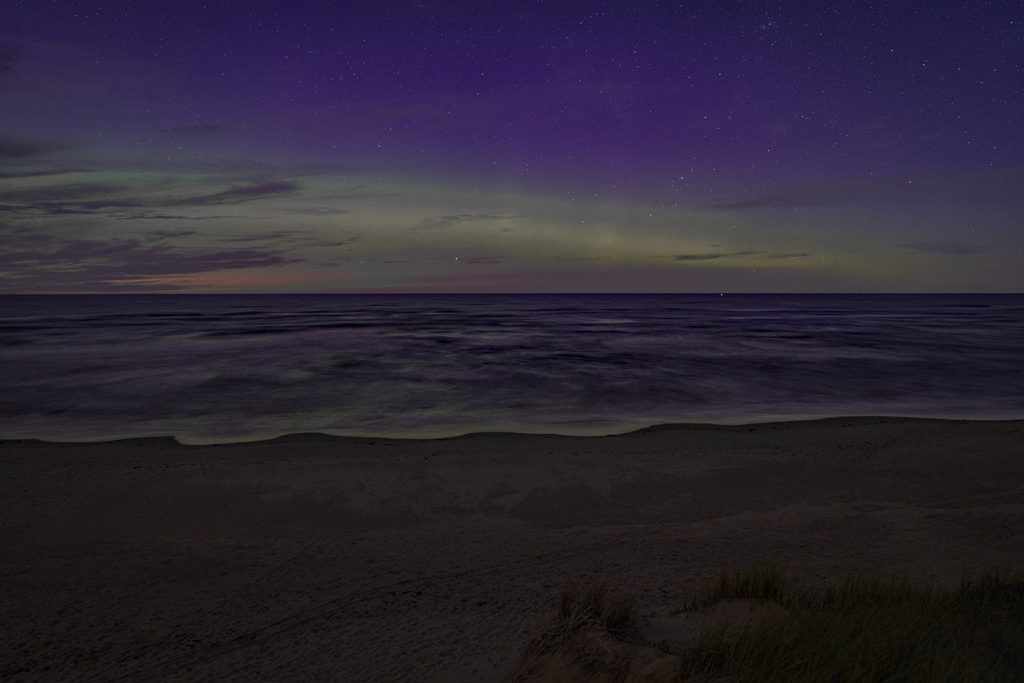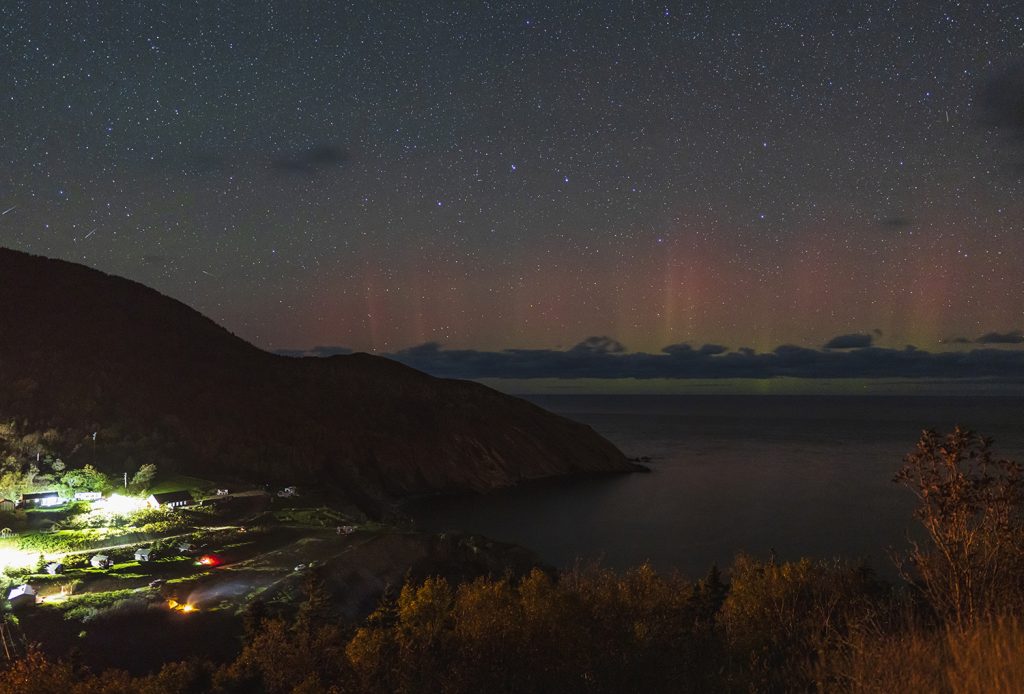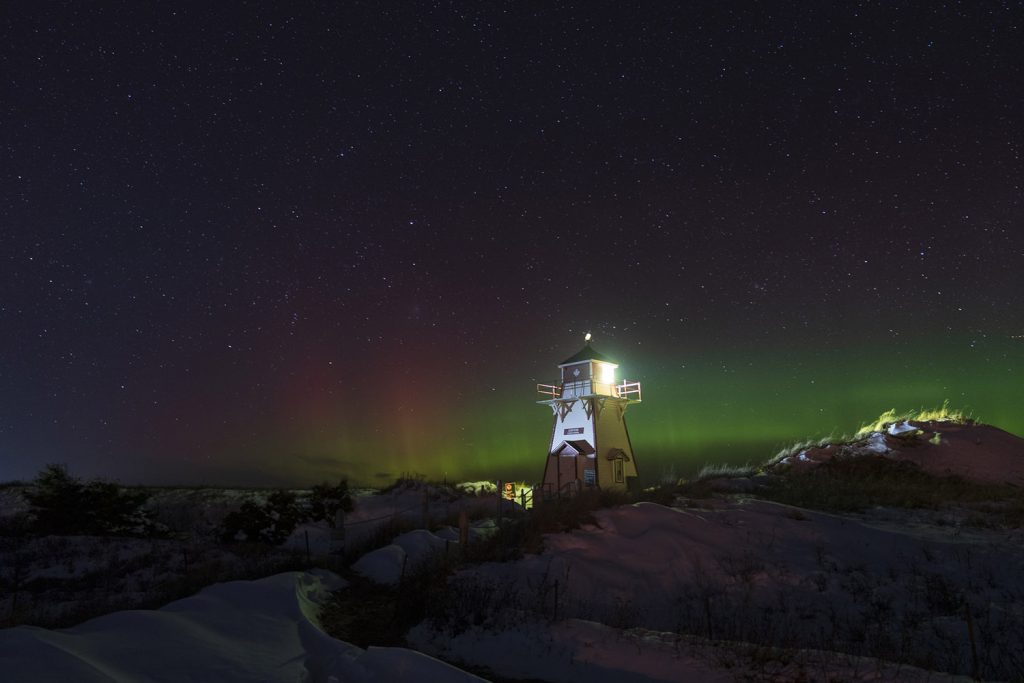
Northern Lights in Atlantic Canada
On November 19, 2023 by jmwebThroughout different times of the year, you can see the northern lights in atlantic Canada. I’ve been an avid northern lights or Aurora Borealis photographer for as long as I can remember taking photographs however there is a difference between seeing the northern lights and photographing them.
Witnessing the northern lights or capturing them is always an incredible experience.
First, let’s talk about the basics of our cameras. All cameras have the ability to capture 1 second of light to 30 seconds of light to infinity seconds of light. Cameras can make nighttime look like daytime. The technology processes everything that ends up in front of its sensor and creates a single image out of it. The ability of our lenses is much stronger than the ability of our eyes.

KP Index of 4 for Prince Edward Island, Nova Scotia and New Brunswick
For instance, in the picture above the aurora wasn’t strong enough to see with the naked eye. For context, it was probably around a KP4 however if I remember correctly, the windspeed was around 550km/second. KP isn’t everything, it’s actually not even a good unit of measure but its the most basic so more people use it.
Sometimes, although we can not see the traditional northern lights with wavey curtains, our cameras can pick up the different colours. During these times, the aurora would present itself to the human eye like a faint cloud (like the above image) however our camera will see things differently.
There was actually some fisherman I knew out fishing off the shore that didn’t notice. By looking at the clouds, you could see something was a little different than everything else and there was a faint hint of green in there.
What my camera picked up tho over a 6 second exposure is below. A pretty big difference but the camera can combine 6 seconds of light into a single image. My eyes can not do that.

There is an old saying that the aurora is more active in the winter time than the summer. This is incorrect. The aurora borealis or northern lights happen all year round however to see the aurora, it needs to be dark. In the winter time, we have longer periods of darkness vs the summer when the sun is up much later.
Basic Tips for Seeing the Northern Lights

Step 1: Go North.
The further north you can go, the better. Northwest Territories or Newfoundland & Labrador would be ideal. But if you don’t have the time to go there, just go as far north as you can. Some good spots in the maritimes to be during an solar storm includes Meat Cove (Cape Breton), Bathurst (New Brunswick), Covehead (PEI).

Step 2: Get Away from ANY and ALL Light Sources
The people in the above vehicles were actually waiting for the northern lights. Can you imagine being in the middle car or front car? This won’t work. Nor should you let others ruin your chances.
If you have to, turn your lights off and hope others get the idea. If not, move away to another location. Pitch darkness is your best bet. In rare situations, it may not require things to be pitch dark but it’s a simple thing that could help a ton.
Someone I met with in Montreal in November of 2023 was saying they could see the northern lights from inside the city. As we all know, Montreal is a big city with lots of light pollution but there was an incredibly strong rare storm.

Step 3: Look low on the horizon.
Most times the aurora will start off low to the horizon. The weird looking cloud will begin in the lower part. As the storm increases, it will become a bigger odd looking cloud. Sometimes you may see the curtains form with a white/grey colour and not green. Other times you may think the world is ending as red like spots start forming in the sky. One thing is for certain, every storm is different.

Step 4: Get As High as Possible
The higher the elevation the better as you have less trees in front of you or power lines or buildings or what ever.

Step 5: Be Ready For Northern Lights Failure.
Bring a warm cup of joe, a blanket, your significant other (if they can be convinced to do a late night excursion) and be prepared for failure. By doing the first three things, you’ll at least have a nice night out if the aurora doesn’t appear thus making the show, bonus.
Next page: Where can you see the Northern Lights?
















